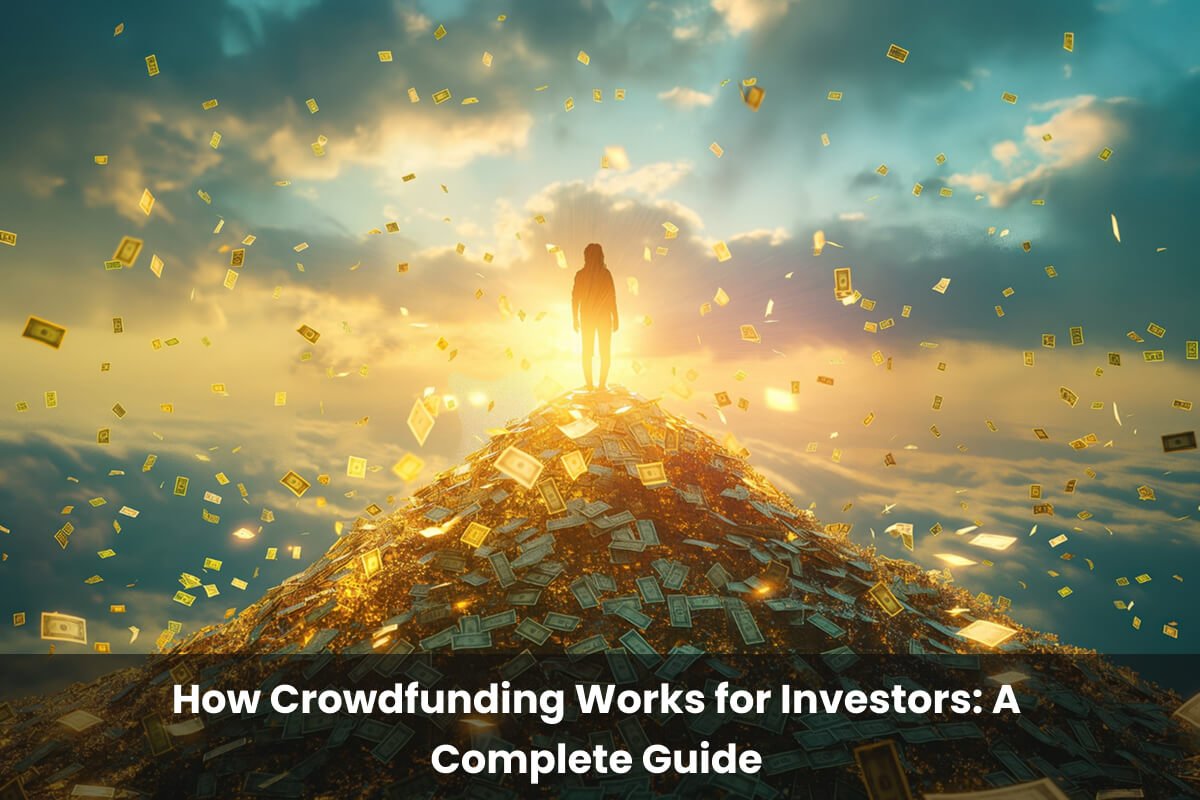Over the past few years, crowdfunding has transformed the process of capital raising in startups and small companies, but it has also created new anticipatory opportunities in the individual investor market. Companies do not only have to count on venture capital or bank loans now but may resort to the crowd providing everyone with an opportunity to invest early in creative projects or businesses.
This model is a unique opportunity to give capital to what an investor believes in, which there is also a possibility of being very rewarding. But what is the process of crowdfunding in terms of investing? What are the dangers, what are the rewards and the main points to keep in mind prior to jumping into it?
What is Crowdfunding?
The principle of crowdfunding lies in raising funds through, in essence, small amounts of money contributed by many individuals- usually through online space. Although initially known by donation based or rewards based models (such as those on Kickstarter or GoFundMe), crowdfunding has since grown to also encompass investment-based crowdfunding, with donors becoming investors or lenders.
Such a change translates into the fact that investors do not simply give money, but acquire a share in the prosperity of the business. However, not everything about crowdfunding is equal and the regulations differ based on type of crowdfunding, the platform and the financial regulation of the country in question. So what are the fundamentals?
Related Blog: What is Crowdfunding: All You Need To Know
Crowdfunding Models for Investors
Crowdfunding is no longer a matter of donating or giving rewards, but it has real economic prospects to offer to people who invest in it. By simply a click of a mouse, people can invest in start-ups, small business loans, or even become part of the real estate development venture. However, not every crowdfunding model is identical, and each of them is also associated with its own structure, risk, and form of generating returns.
By knowing these models, one will know the best path of investment. Regardless of whether you demand regular income, long-term growth and/or portfolio diversification, you can be sure that there is a model of crowdfunding that can help in implementing the desired strategy.
The following are the key crowdfunding models that investors have to select:
- Equity Crowdfunding- Purchase equity shares of a company.
- Debt Crowdfunding- loan money and get interest.
- Revenue-Based Crowdfunding- Earn an income through a company portion of revenues.
- Convertible Notes – Invest as a loan that may become an equity in the future.
- Real Estate Crowdfunding- Fund property developments and realize an investment in the form of rental income or gains.
How the Crowdfunding Process Works for Investors?
Crowdfunding investment is meant to be open and even to old hands. The majority of platforms make the process easy, but in order to make effective and confident decisions it is necessary to get an idea as to how the process is done and understand each step.
Choosing a platform, monitoring the development of your investment, and all other steps during the process have been standard among investors, and here is how it is usually done:
1. Select a Framework
Choose a crowd funding platform depending on the reason behind your crowdfunding-start up investing, peer to peer lending, or real estate. Check the reputation of the platform, the minimum amount of investment and type of deals.
2. Sign up
Registration and fulfilling the required KYC (Know Your Customer) and verifications. This will facilitate adherence to the financial regulations.
3. Surfing investment opportunities
Investigate live campaigns. Every posting contains such valuable information as business plans, financials, terms, the background of the team, and risk factors.
4. Get a Due Diligence Completed
Scrutinize the possibility. Before investing, you should examine the business viability, size of market, revenue projections and the potential of exiting.
5. Invest in it
Choose the amount to invest which is usually $100 and finalise the transaction. You will sign contracts e-sign and pay through the bank or card.
6. The Campaign needs to Close
When the funding target is met (or the deadline is over), your investment will become secure. But in case the campaign does not raise the desired amount, your money goes back to you.
7. Intake Investment Documents
Once it has been closed, you will be furnished with digital documentation in the form of share certificates, loan notes, or investor agreements depending on the model.
8. Monitor Progress and Remunerations
Follow your investment using the platform dashboard. These returns can be in form of interest or dividends or revenue shares or long term capital gains.
9. Exit (If available)
There are secondary markets that you are able to sell your investment ahead of time on some platforms. Otherwise, you might be waiting until an exit event such as acquisition or IPO.
Benefits of Crowdfunding for Investors
Investing has never been as easy as crowdfunding. Any everyday person with the right attitude and a limited amount of capital can now join the venture previously only accessible to venture capitalists or individuals with high net worth because of nothing more than an internet connection.
The new form of investment comes with an immense set of advantages, particularly to those who wish to diversify their portfolio, invest in innovativeness, or those who want to jump into high-potential activities early enough.
These are the main advantages to the investors:
- Low Barriers to Entry – Invest as little as you want, usually as little as $100 and start investing.
- Access to Early-Stage Investment opportunities can help investors buy into startups before they scale.
- Diversification -Distribute investment into industries and sectors.
- Possibility of High Returns- An early investment can serve to provide high returns in the event of the success of the business.
- Portfolio Customization You may select a variety of projects according to your goals and risk appetite.
- Promote Innovation- Invest in ideas and entrepreneurs that you think are worth it.
- User-Friendly Website Platforms: Easy to operate internet channels make the whole process very simple.
Related Blog: Why Invest in Crowdfunding? Key Benefits Explained
Tips for First-Time Crowdfunding Investors
Starting out with crowdfunding could be very thrilling and daunting at the same time, particularly when it is your debut investment. It is normally not a complicated process, but to make better choices and to not fall into the standard traps, it is advisable to be well prepared and empowered.
The following tips will help you enter the atmosphere of crowdfunding with particular confidence and create a solid basis of investments.
The following are the tips one should have as a first time investor:
- Go Small, go small until you are comfortable.
- Do Your Homework – Screening the company, market and the team.
- Invest in Diversity- Put your money in several projects to diversify risk.
- Know the Risks – Realize that startups and small businesses may not make it.
- Read Fine Prints -Do check on investment contracts and charges.
- Choose Reliable Platforms -Engage reputable crowdfunding sites whose track records are good.
- Be Patient- Crowdfunding investments are sometimes long term.
- Ask Questions – It is fine to contact platform support or founders of the company.
FAQs About Crowdfunding Works for Investors
Crowdfunding is a fairly novel investment that requires a lot of questions to be answered to most people. Investors need to know a lot more than just what kind of returns they can get with their investments, but how safe their money will be. To ensure that you get comfortable with the concept of crowdfunding, some of the most associated questions have been put into this FAQ section.
Q1. How does crowdfunding differ from traditional investing?
By contrast, crowdfunding gives ordinary individual investors the ability to invest directly online in the startups or projects of others often in small amounts although lesser minimums and greater access to the individual startup or project, whereas traditional investing typically involves the pooling of larger sums of money and dealings with brokers or funds.
Q2. When and how can I exit a crowdfunding investment?
Exits are platforms and type of investment dependent. Others also provide secondary markets to sell ahead of schedule, but most people must wait until events such as acquisitions or initial public offering occur, a process that will again take several years.
Q3. How do I choose the right crowdfunding platform?
Identify platforms that have a good reputation, are open about their fees, carry out comprehensive screening, have friendly interfaces and whose investments match your objectives and risk tolerance.
Q4. Are there tax implications on crowdfunding returns?
Yes, dividends, interest, capital gain, etc., are usually given back as taxable returns. Depending on the country and the type of an investment, there are certain details that will have to be consulted with a tax professional.
Q5. How can I evaluate if a crowdfunding opportunity is worth investing in?
Check the business plan, financial statements, management as well as the risk, and the potential market. Compare similar opportunities with research in the industry than to make a move.
Conclusion
With crowdfunding it has brought in new features of investment where people are able to access companies at an earlier time and also unique projects. The possible rewards may sound tempting, yet people should know about the various models, procedures and risks prior to investing in them.
With due diligence, selection of a good platform, and a lot of diversification, crowdfunding can prove to be a strategic addition to your investment portfolio. Be patient, plan carefully and you might find that there are opportunities in this new method of increasing your wealth.
Ready to Empower Change Through Investment? Start with Social For Action!
When it comes to securing your future and also trying to create a solid difference, Social For Action is an amazing opportunity associated with crowdfunding. We are a place where experienced investors like you can get acquainted with new projects and start-ups to make the future. It is no feat when easy, transparent processes, and a community-driven mentality make you an active participant at Social For Action, where you support ideas that matter.
Do not be a spectator of change, but do it. Be a part of a crowdfunding adventure today with Social For Action and make the first move towards investing in the game-changers of the future. The fact that you might be there to support them might help.







Post a Comment